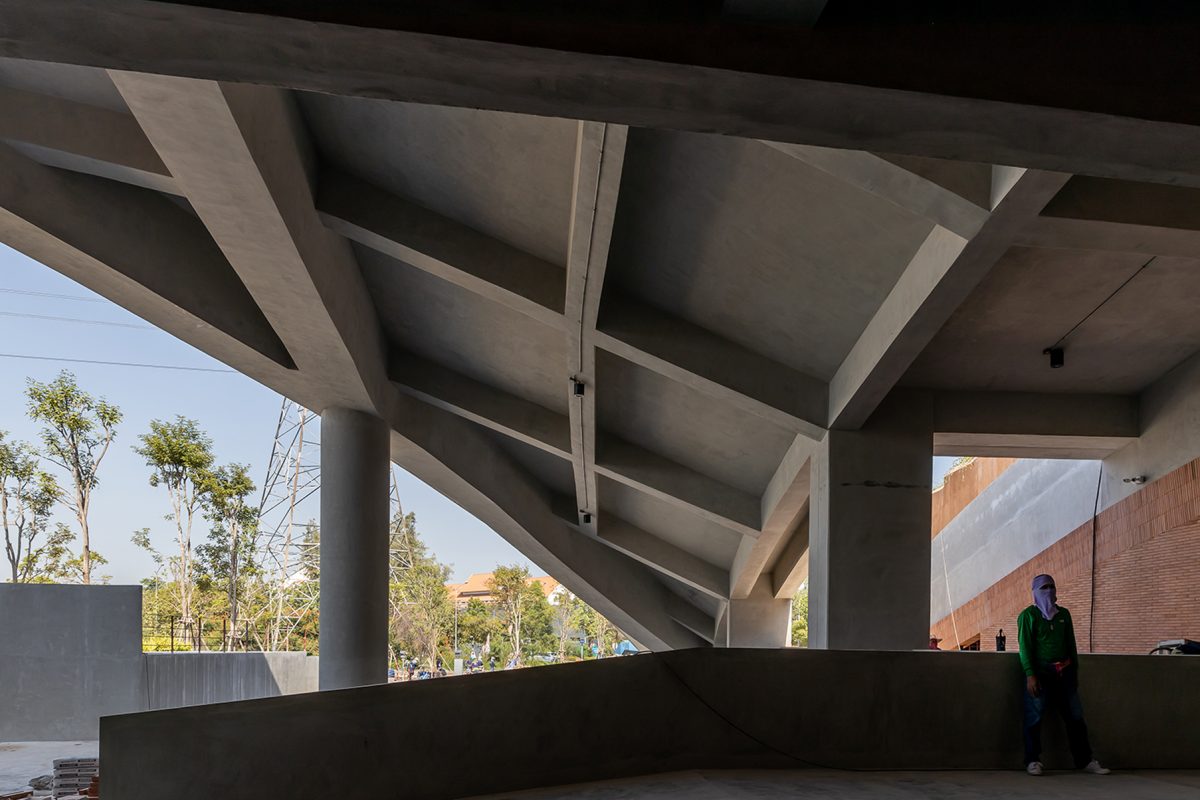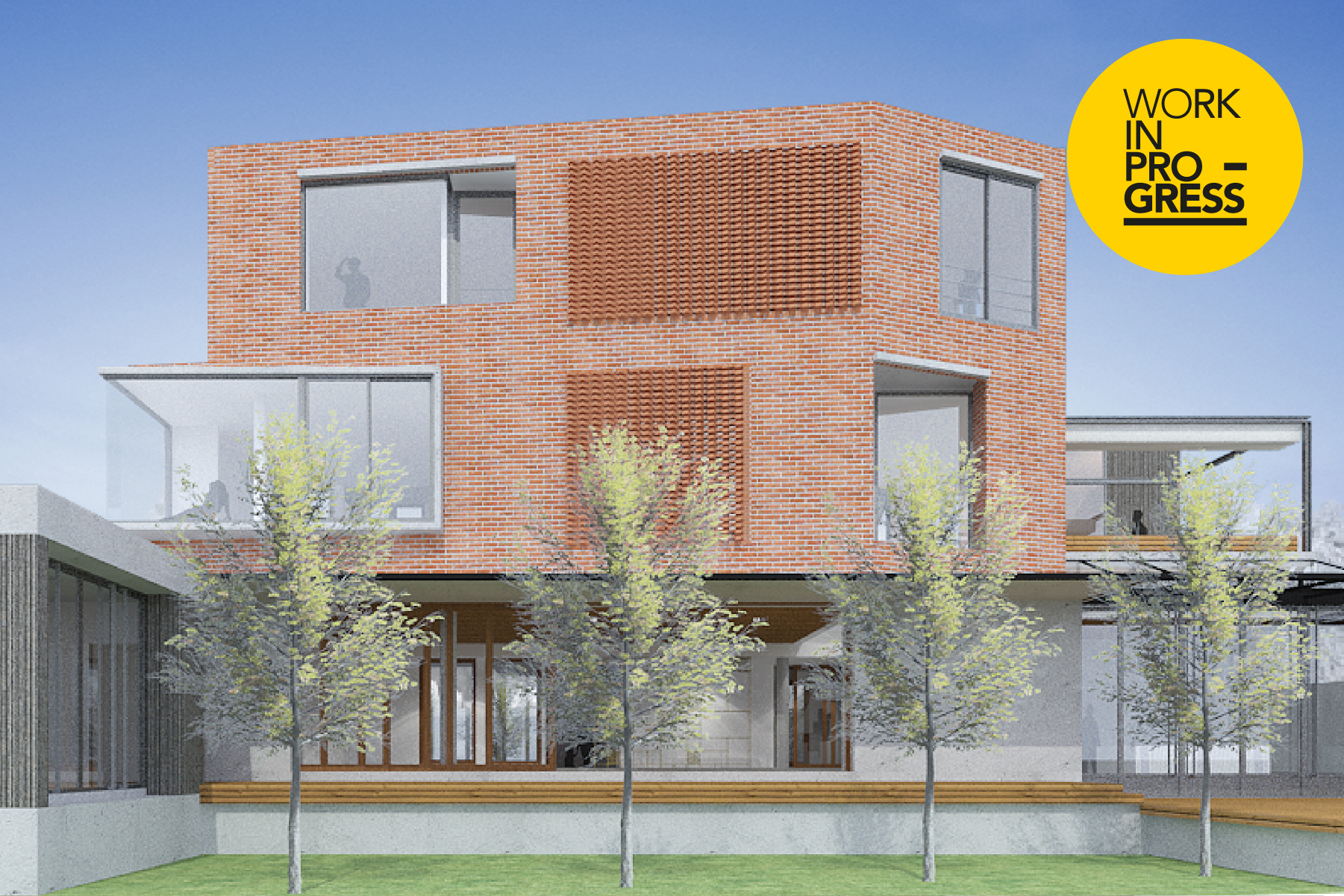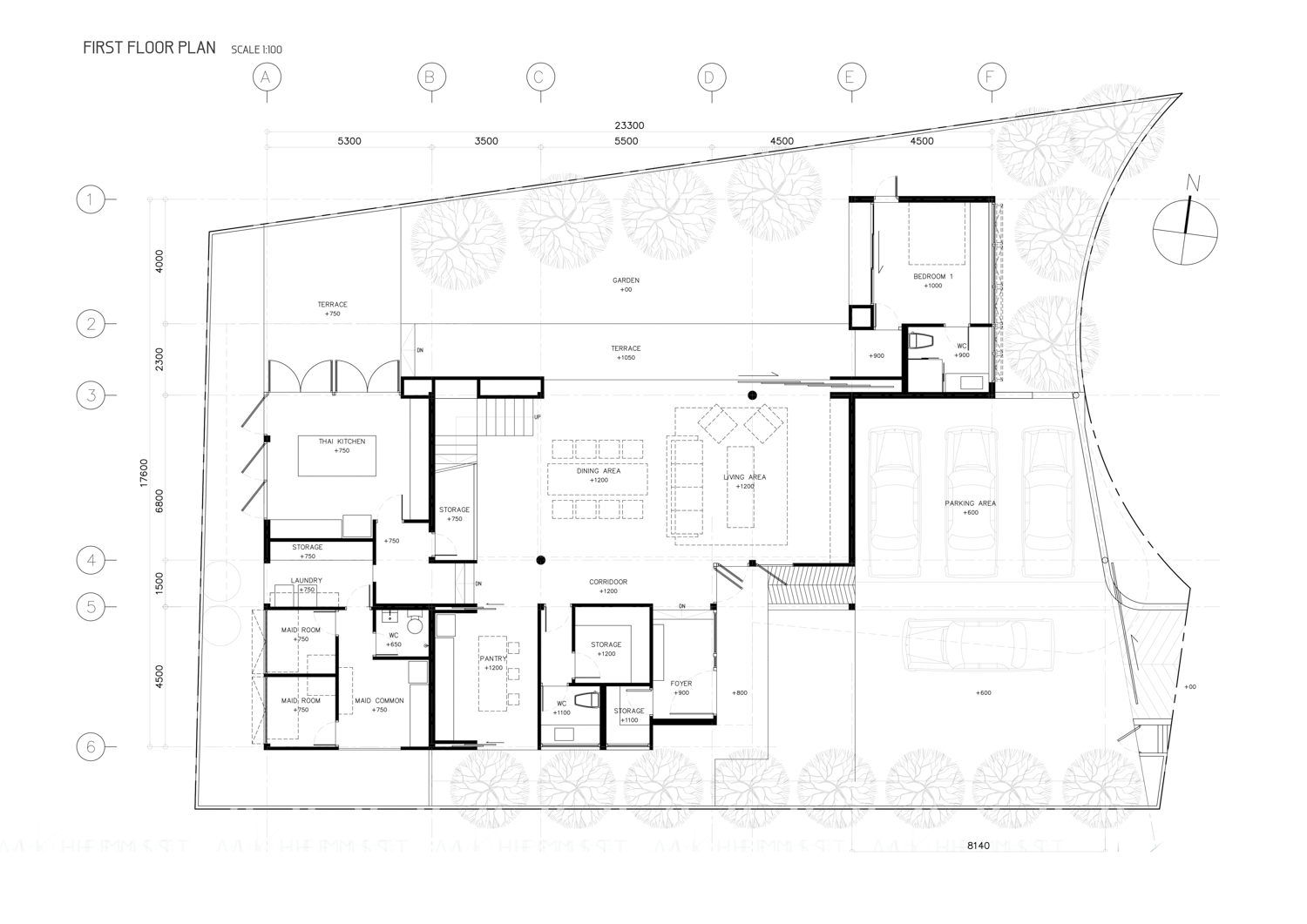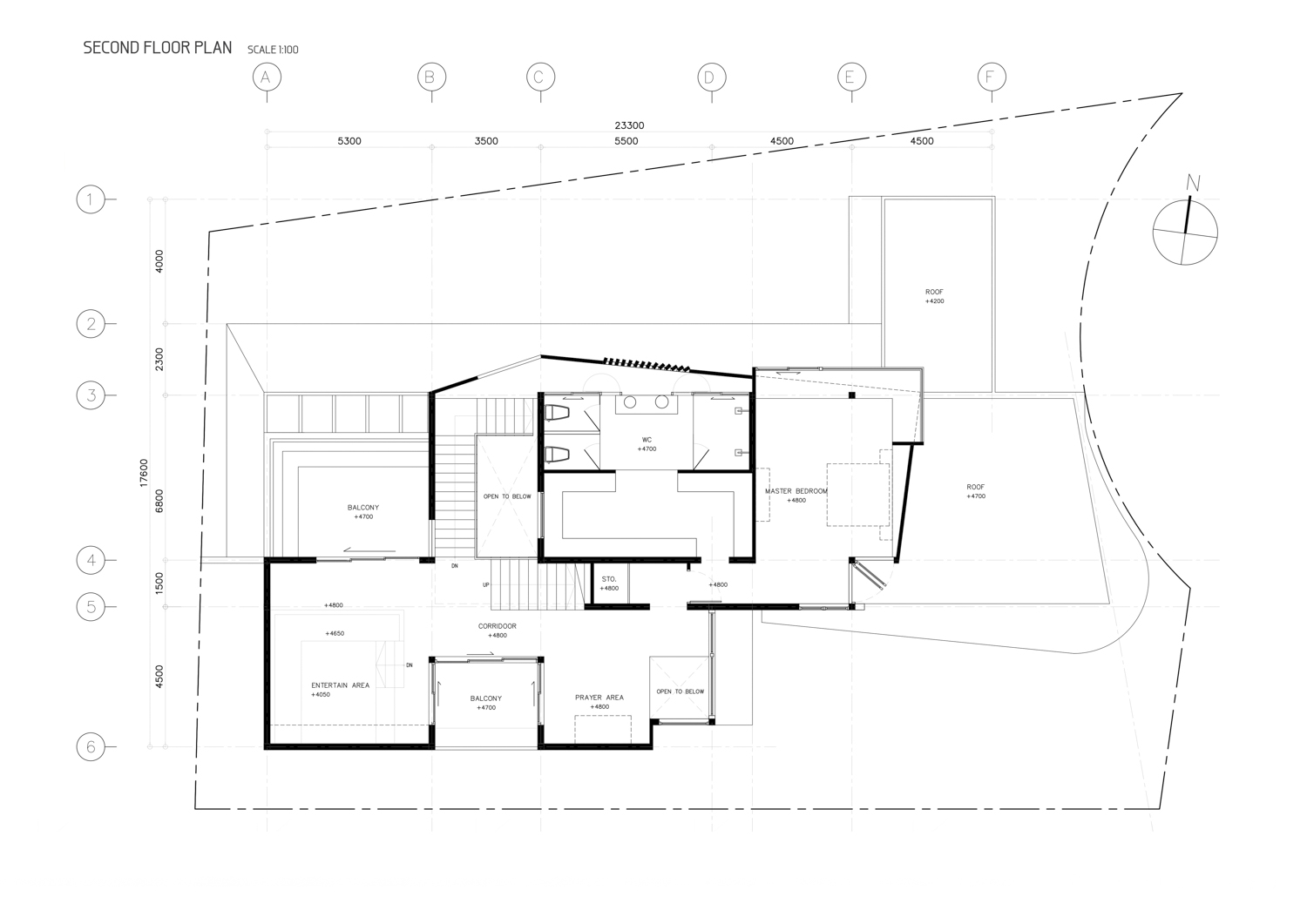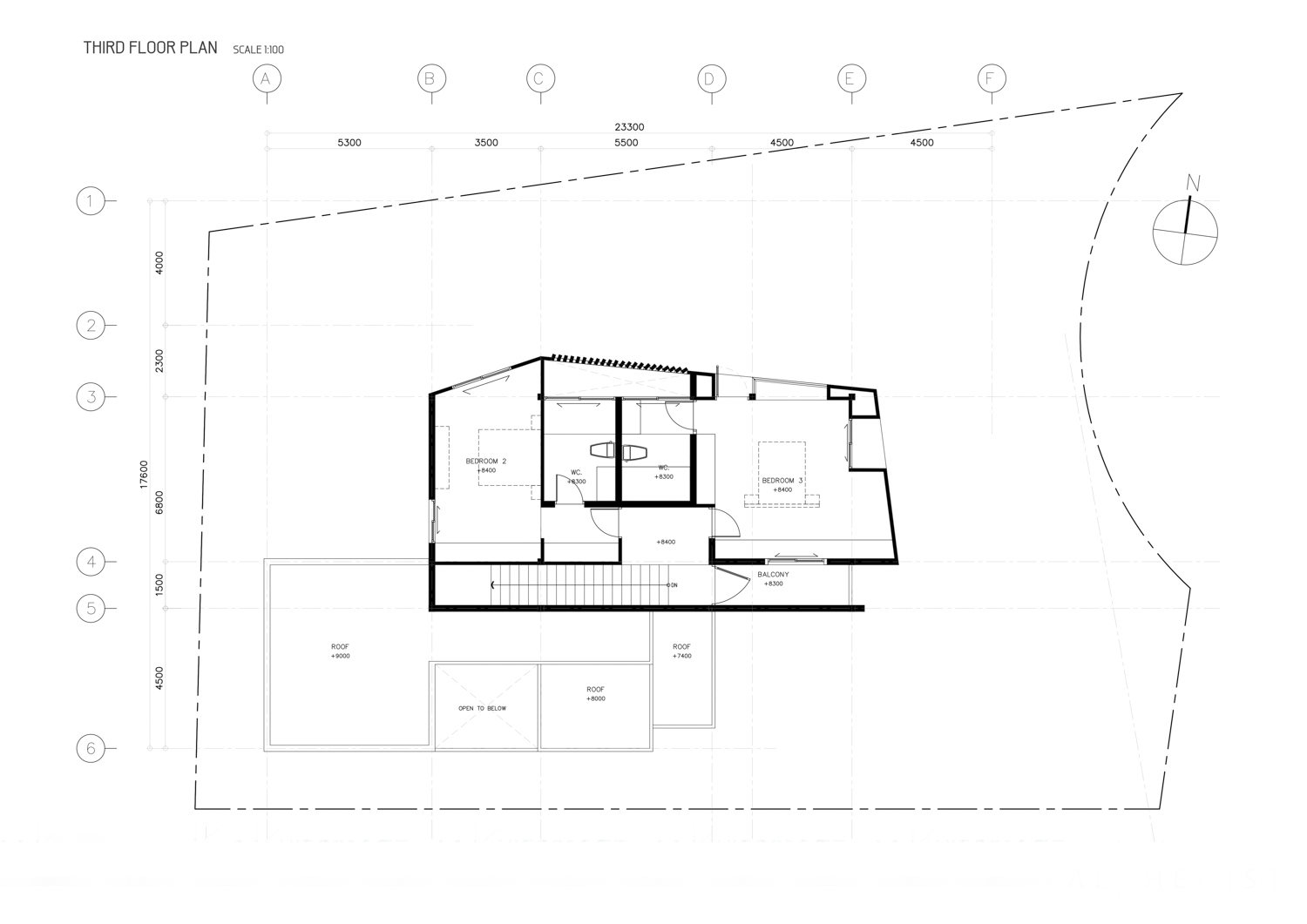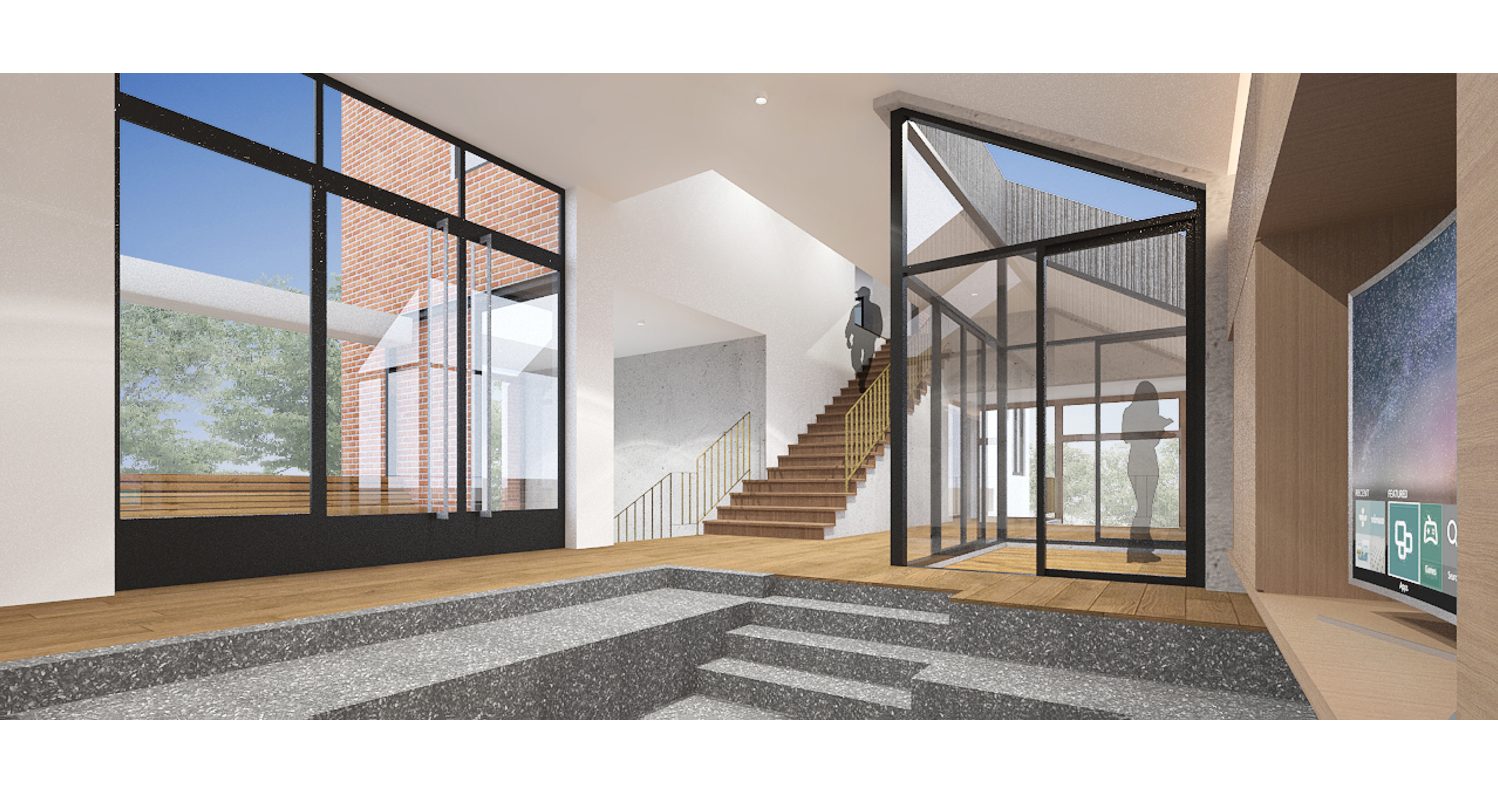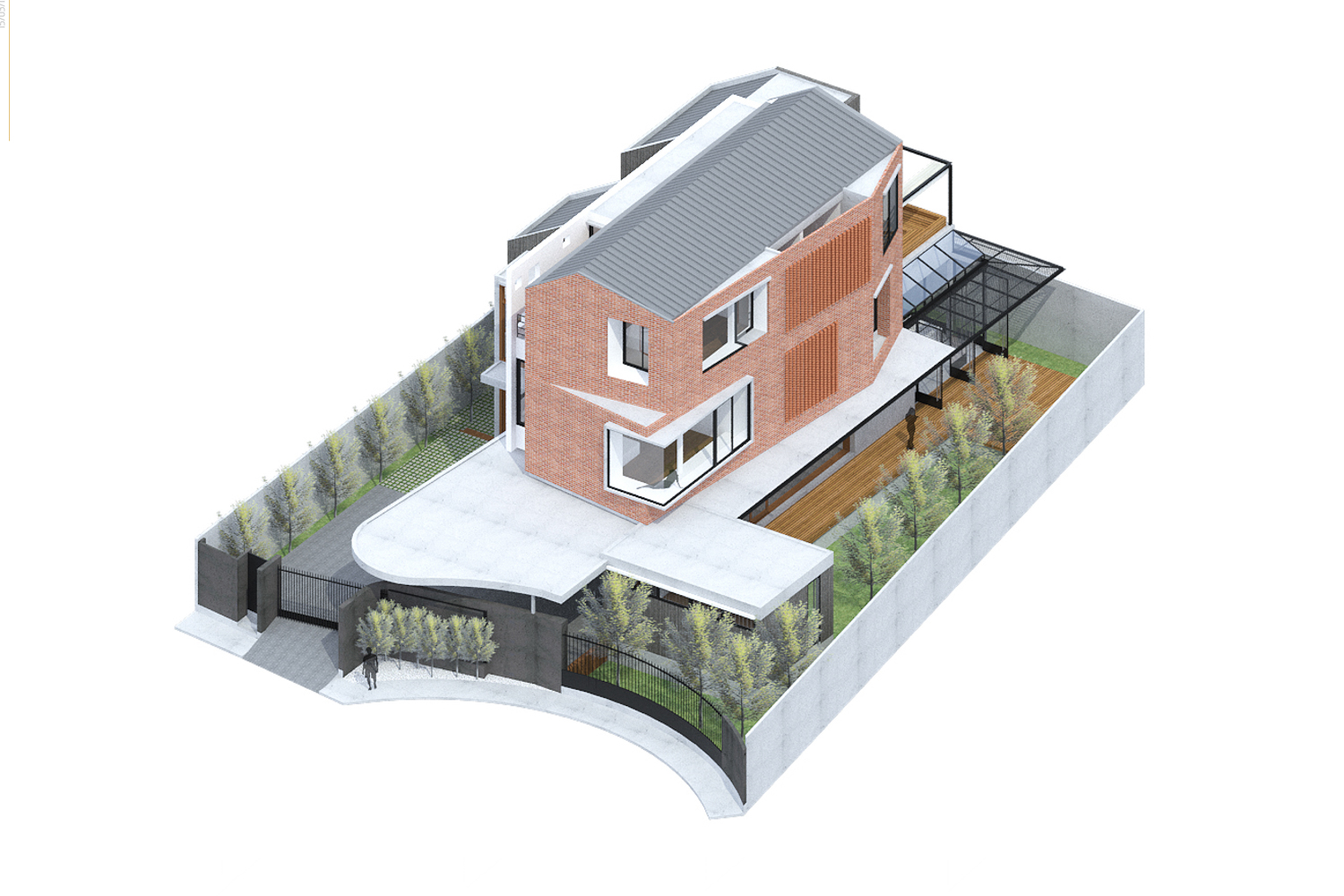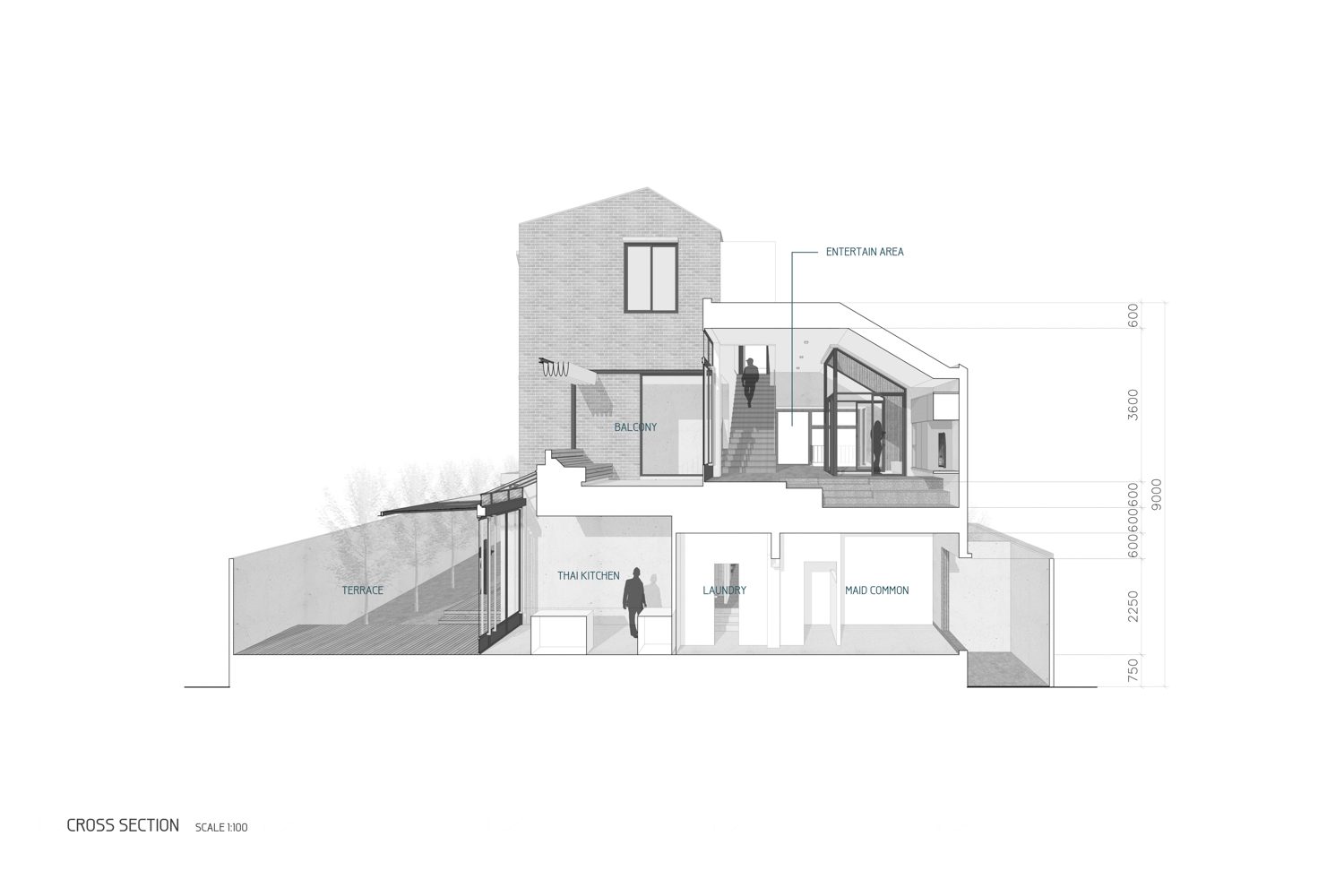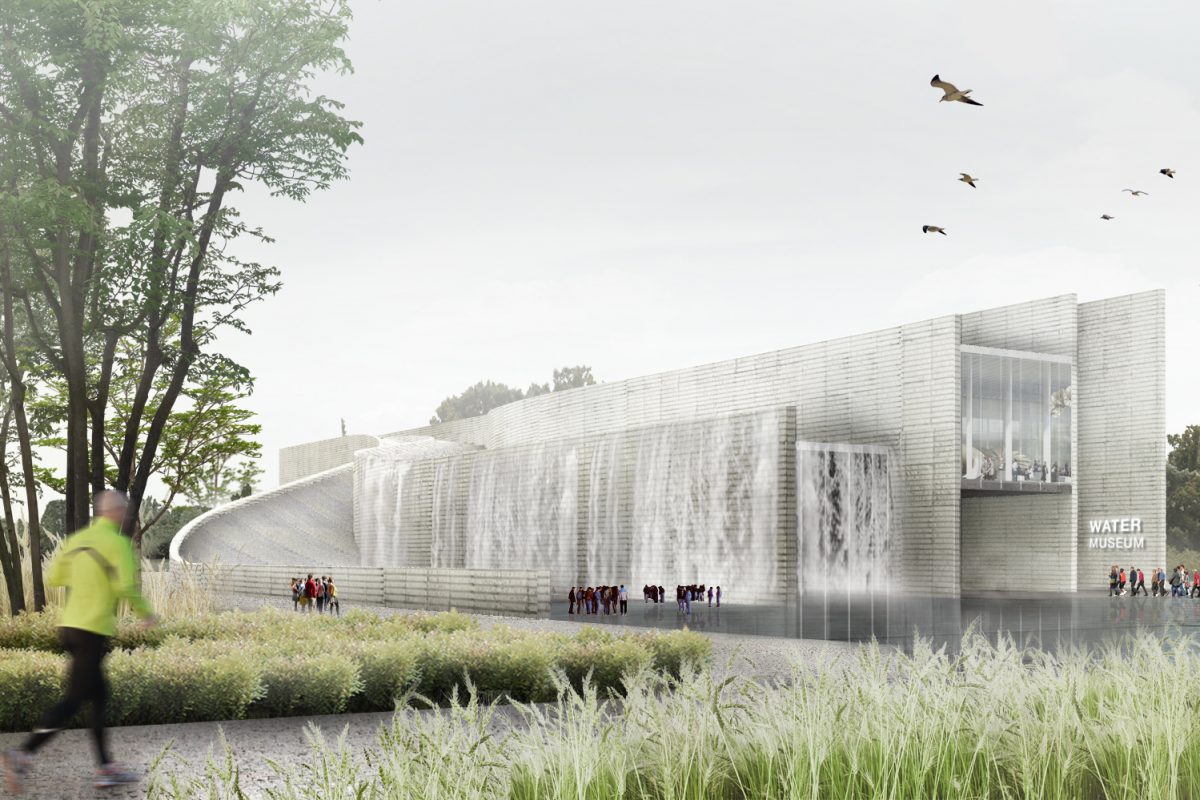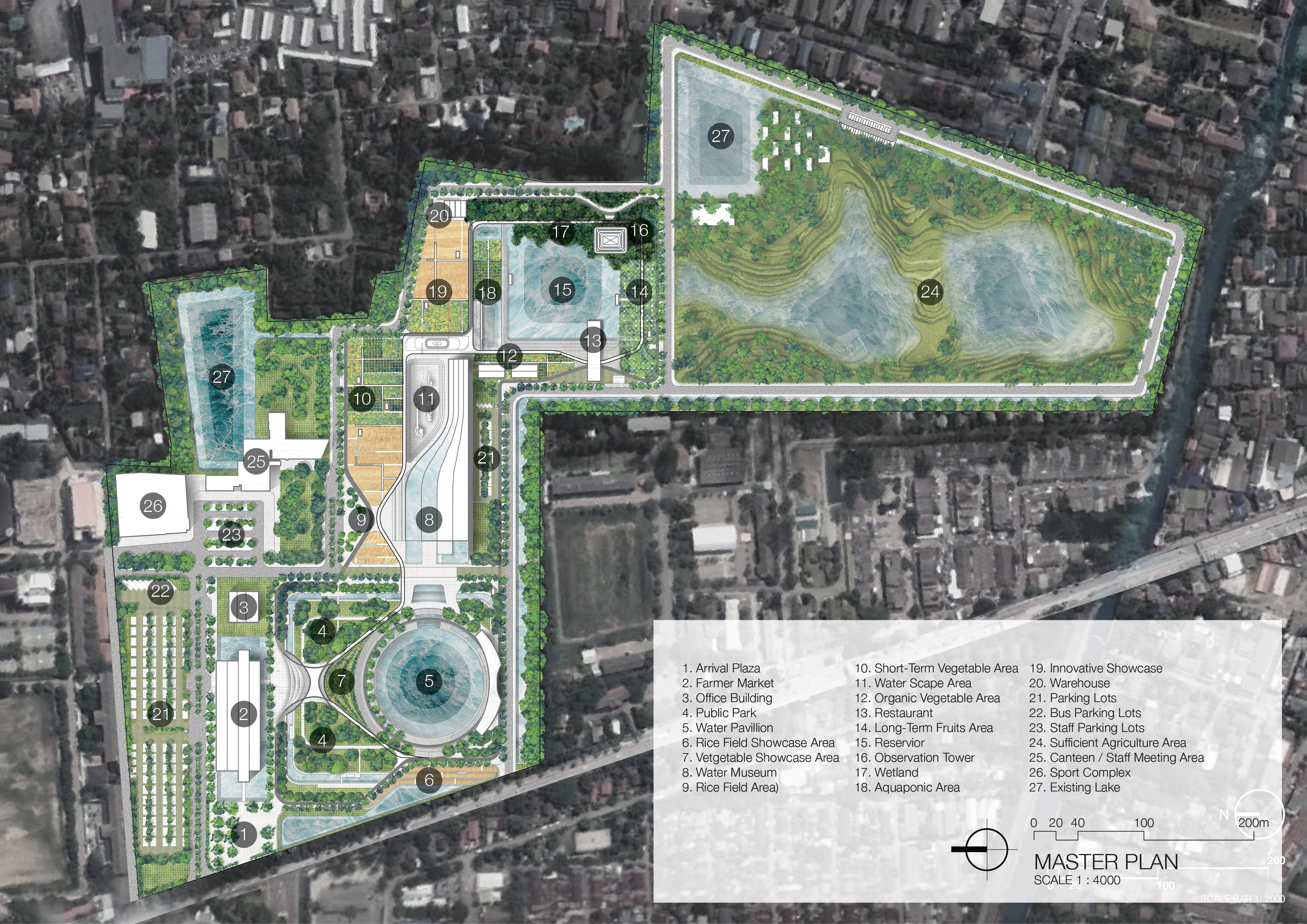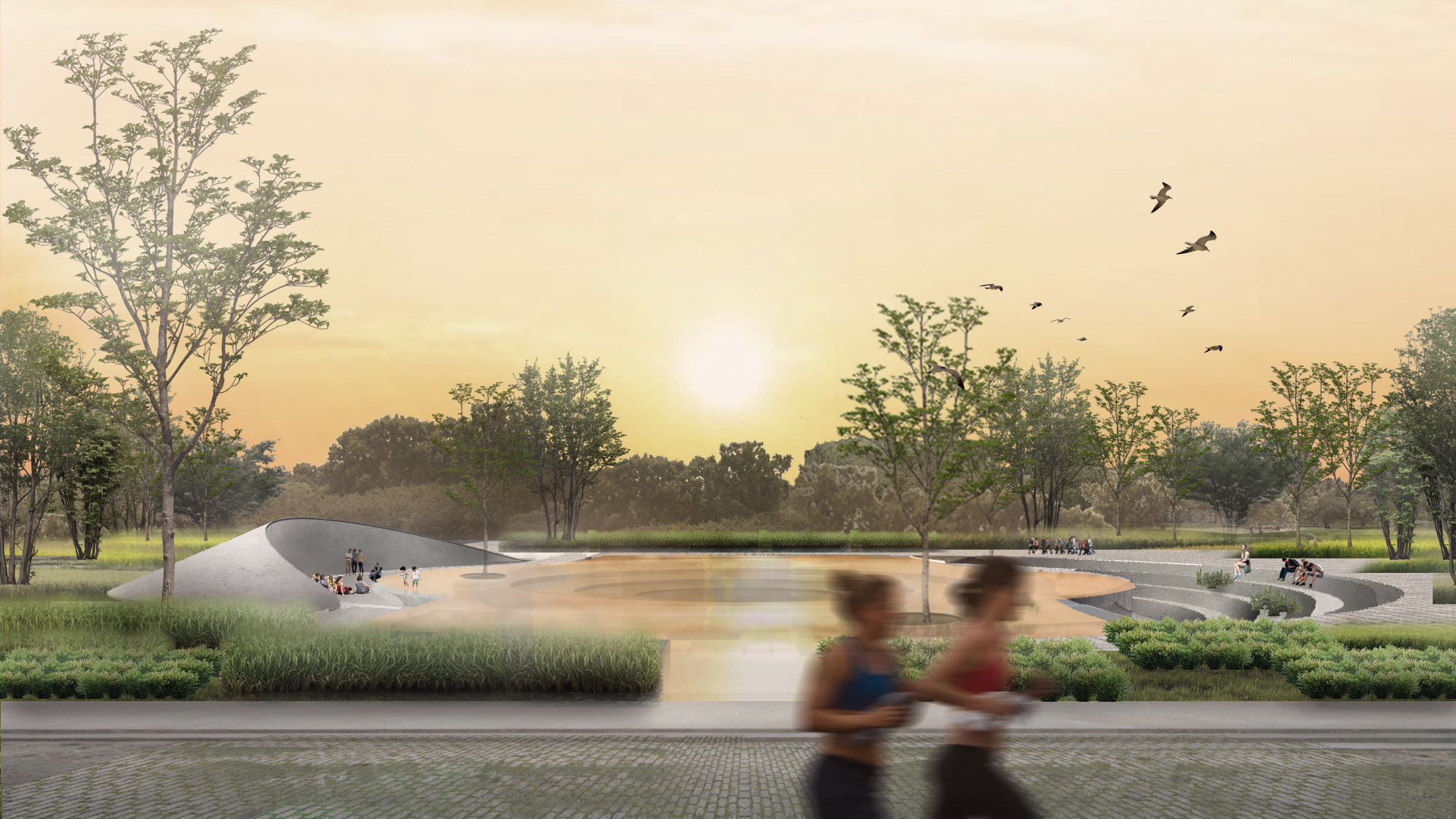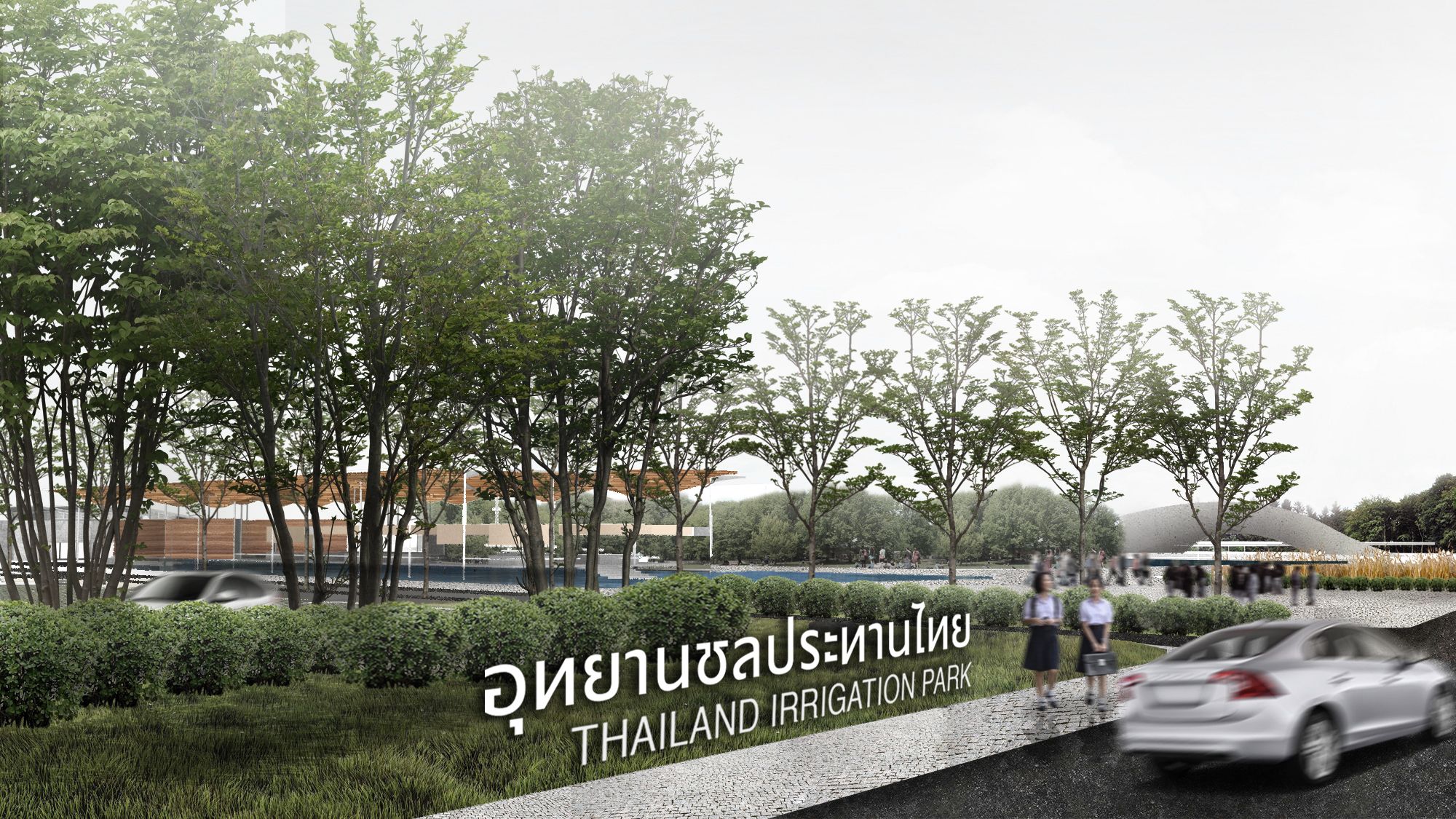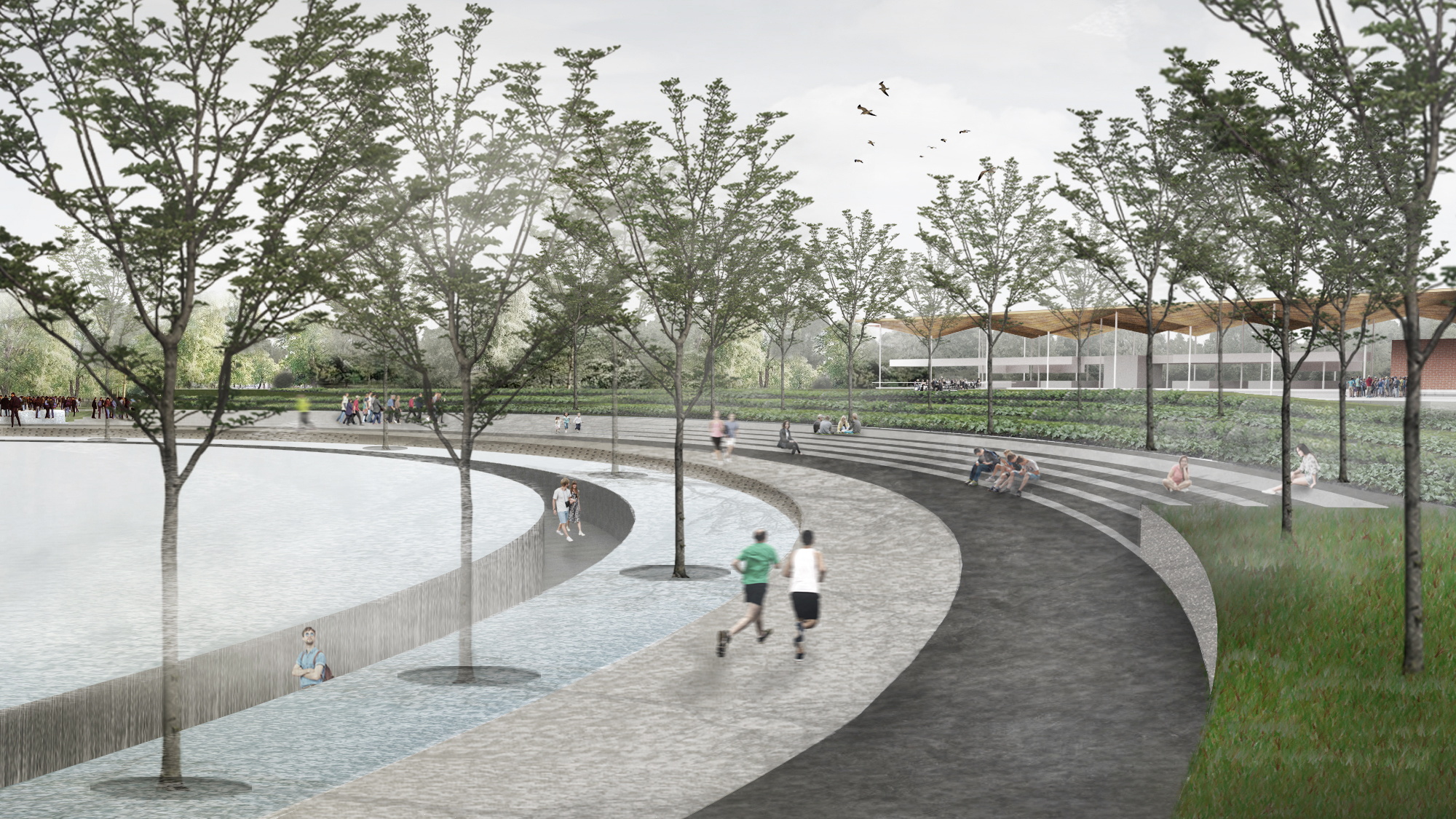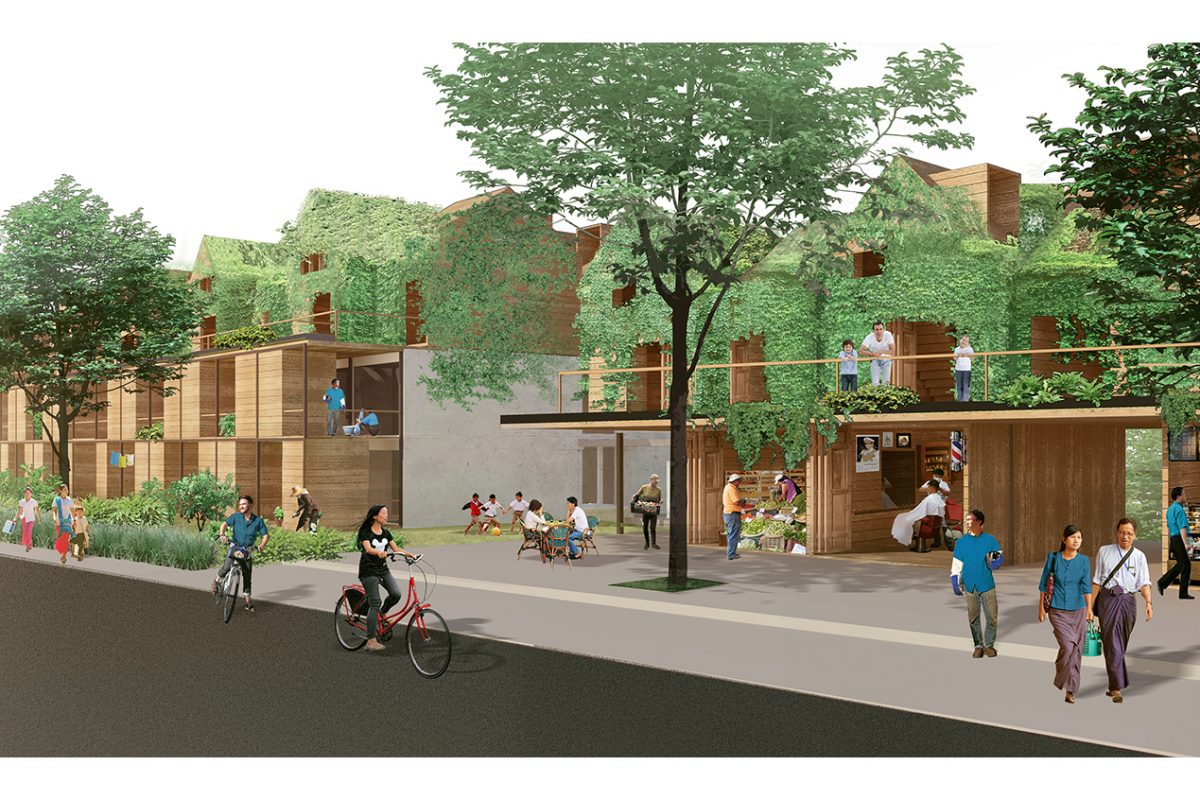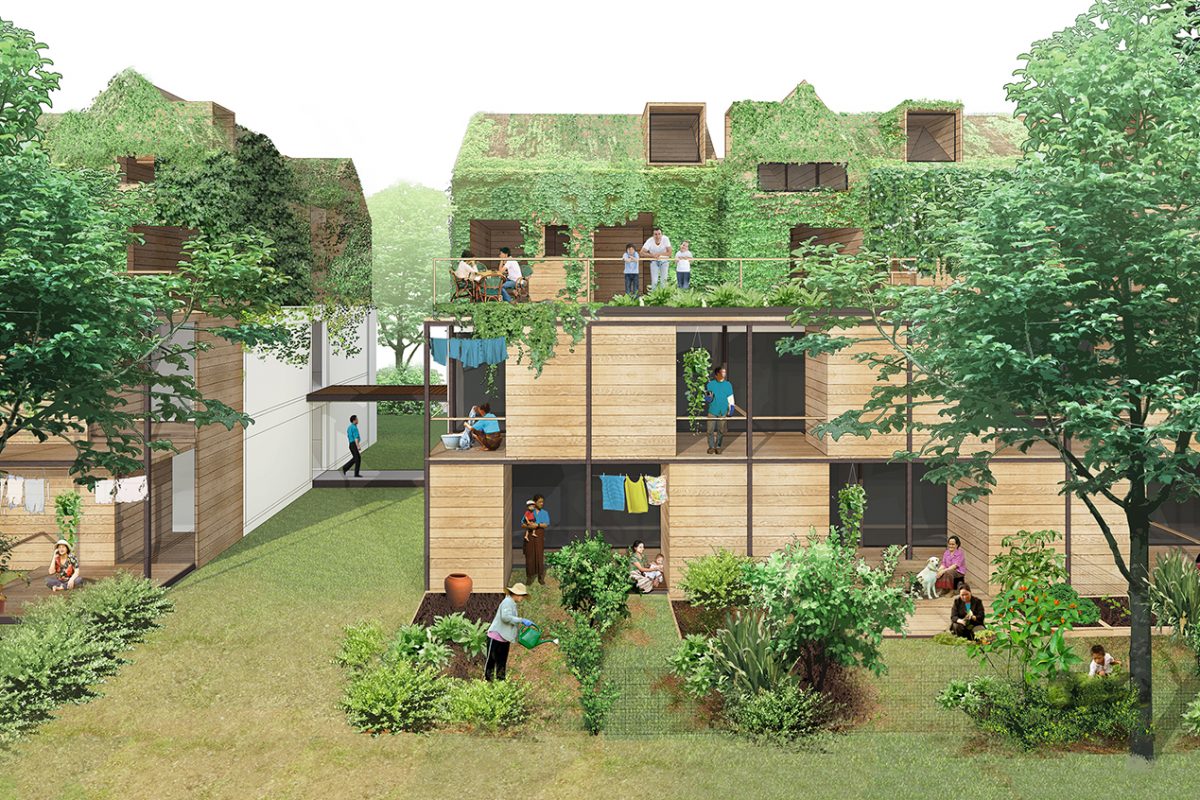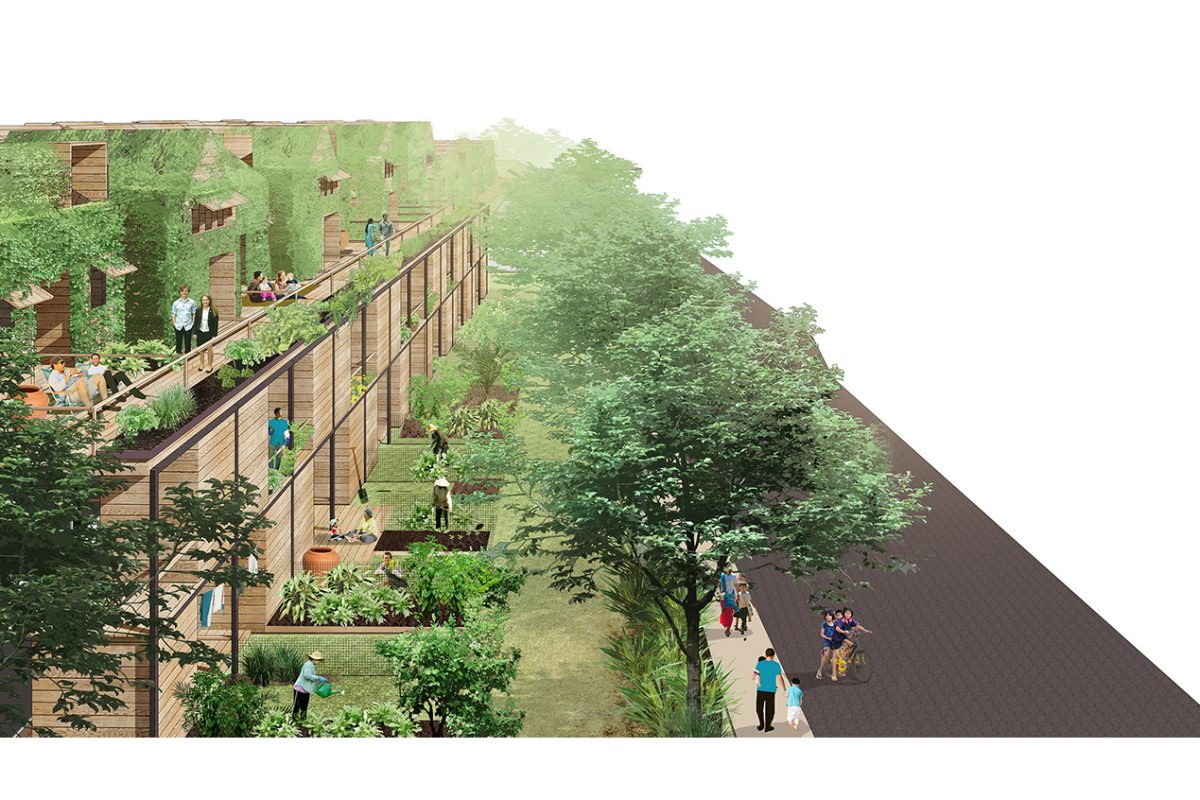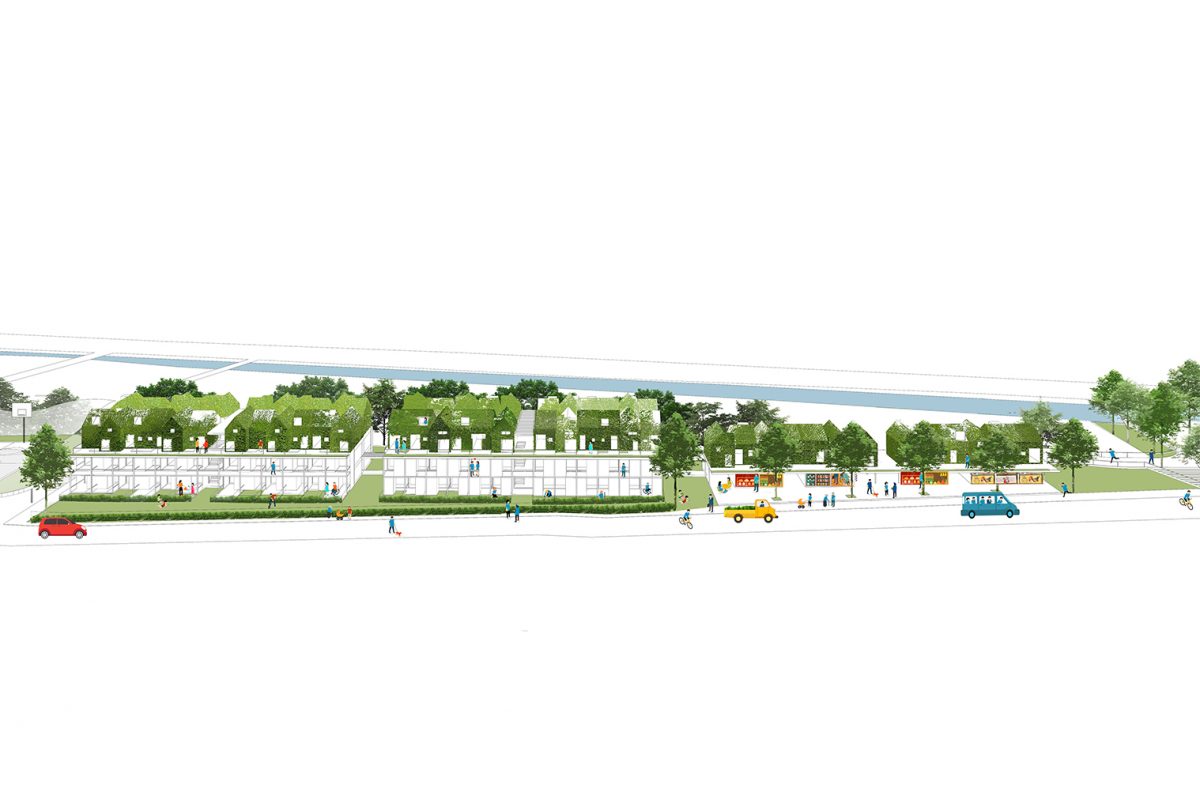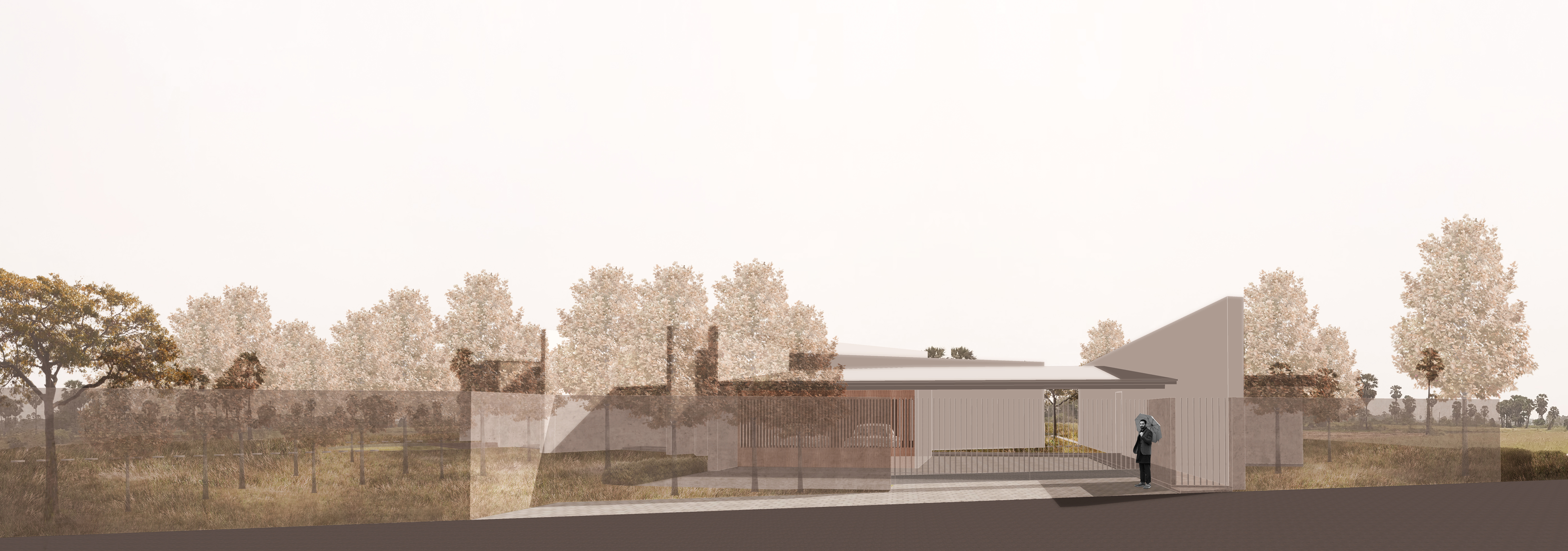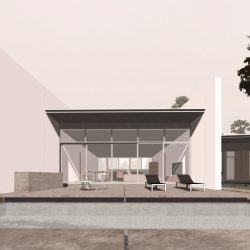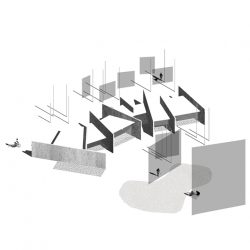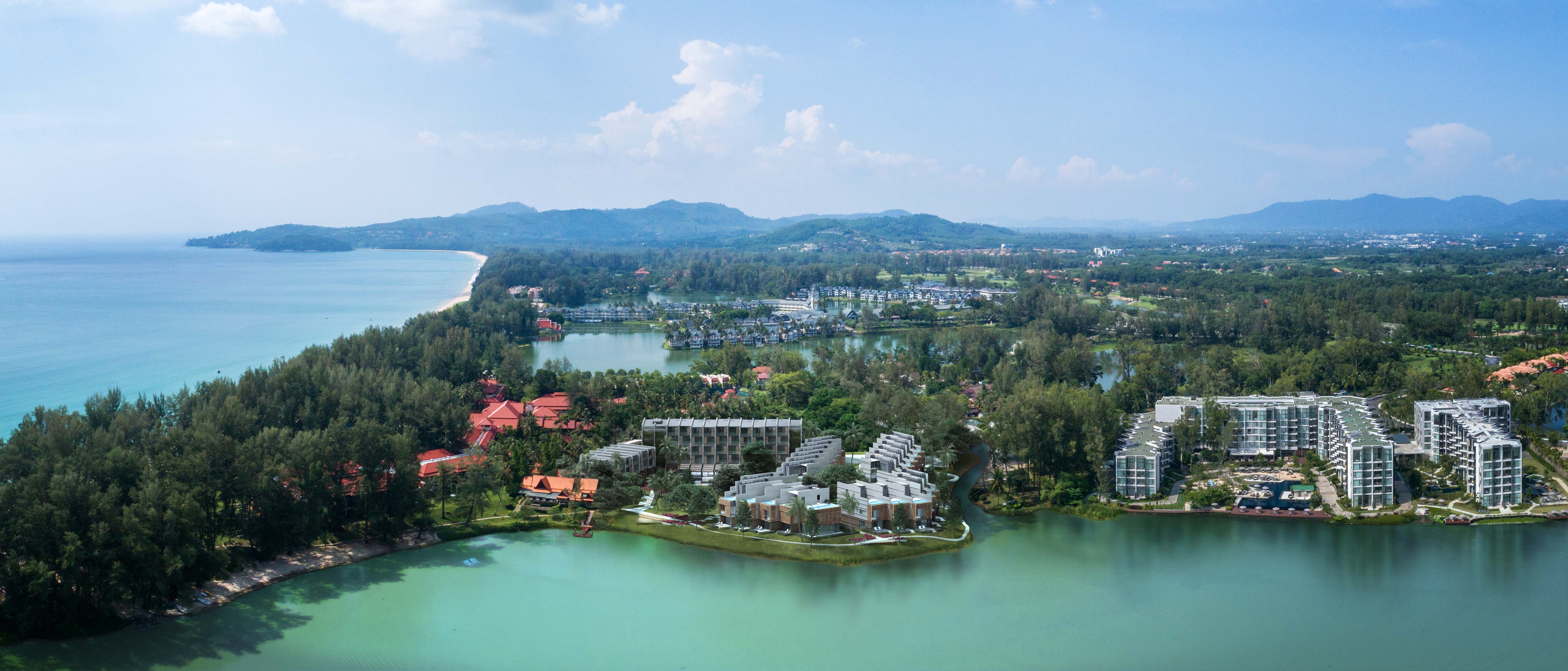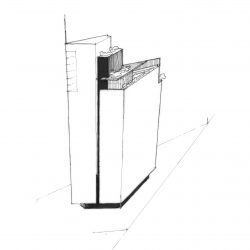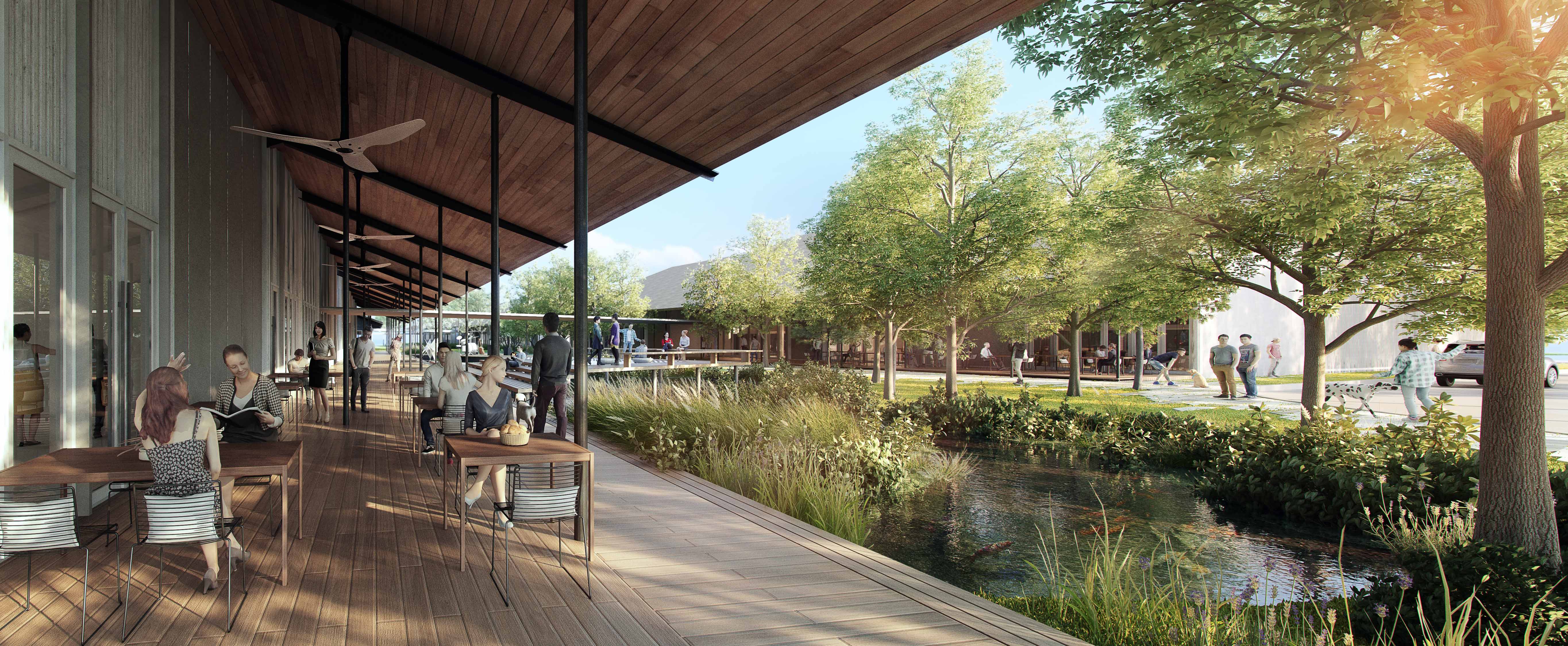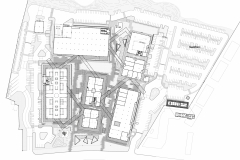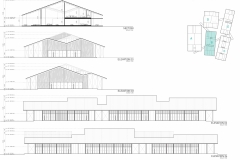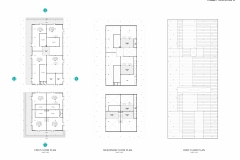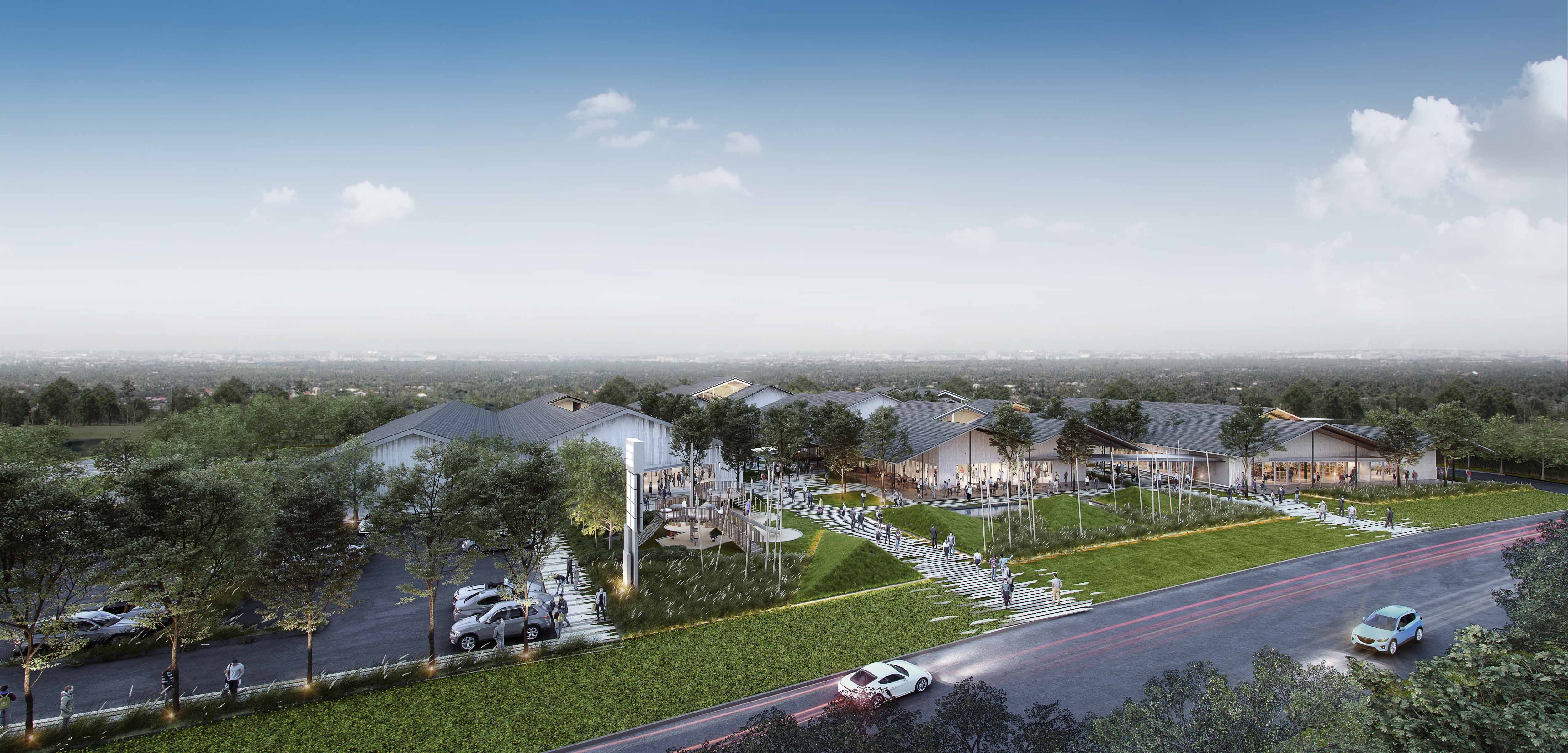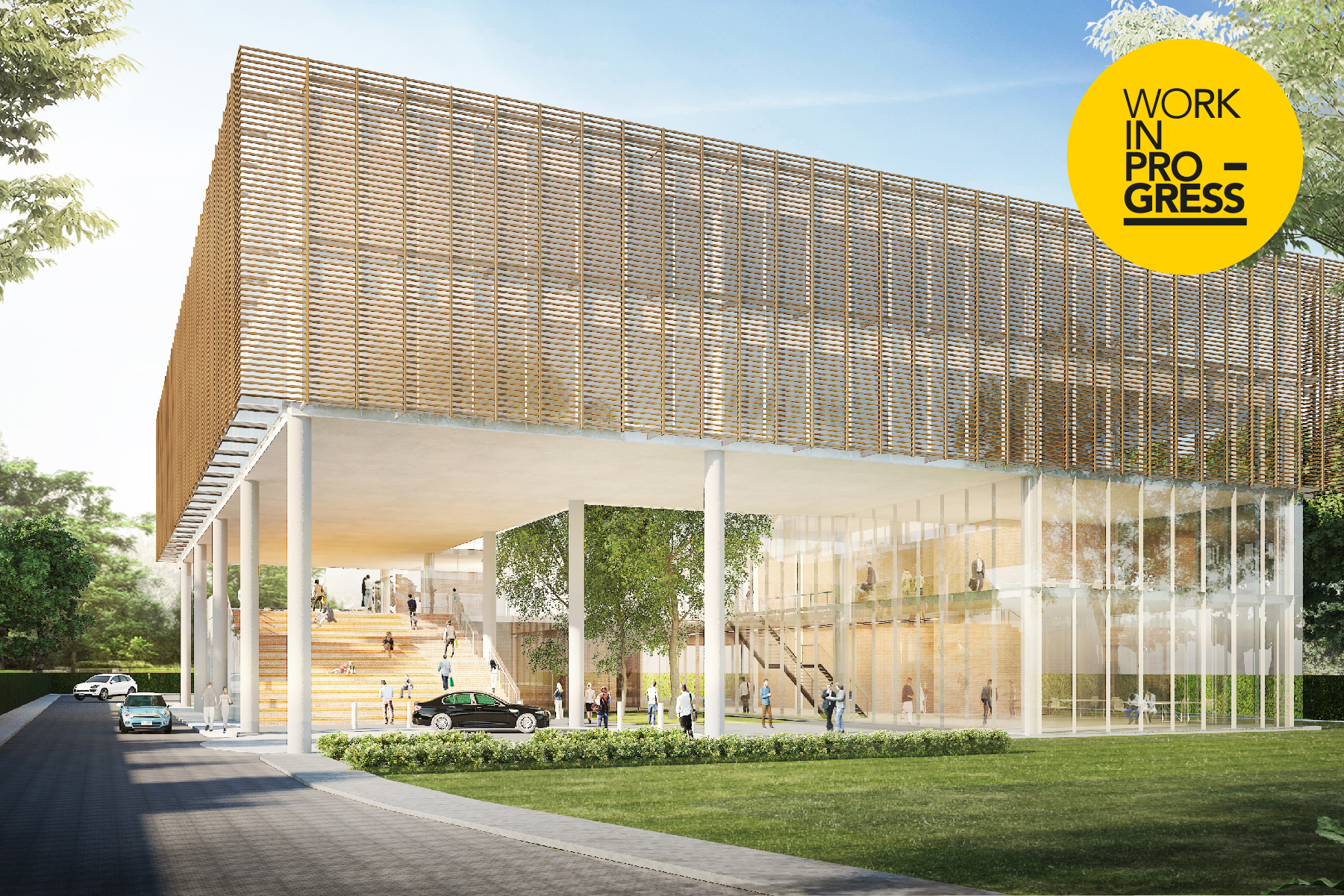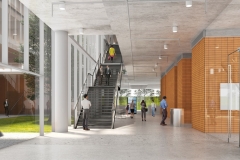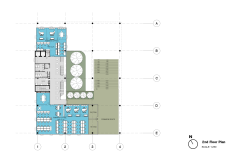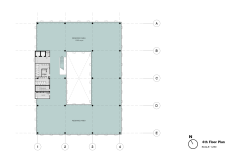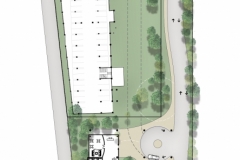Location: Bangkok, Thailand
Building Type: Multi-Purpose Building
Owner: Thammasat University
Architect: Arsom Silp Institute Of The Arts
Interior Designer: Dimensional Interpretation
Landscape Designer: LANDPROCESS
Structural Engineer: Degree System Co., Ltd
System Engineer: TPM Consultants Co., Ltd
Contractor: CM49
Building Area: 60,000 sq.m
TEXT: JAKSIN NOYRAIPHOOM
PHOTO: KETSIREE WONGWAN EXCEPT AS NOTED
(For English, press here)
มหาวิทยาลัยธรรมศาสตร์เป็นสถาบันหนึ่งจากจำนวนหลายสถาบันการศึกษา ที่ได้นำแนวคิดด้านสิ่งแวดล้อมมาประยุกต์ใช้ในมหาวิทยาลัยจนเกิดเป็น “อุทยานเรียนรู้ป๋วย 100 ปี” ซึ่งถือเป็นผลงานที่มีรูปแบบเฉพาะตัว ที่แสดงออกถึงมุมมองต่อสิ่งแวดล้อมและสังคม และแสดงอัตลักษณ์ความเป็นธรรมศาสตร์อยู่อย่างเต็มเปี่ยม อุทยานเรียนรู้ป๋วย 100 ปี แห่งนี้ตั้งอยู่บนที่ดินด้านฝั่งถนนพหลโยธิน ระหว่างอาคารยิมเนเซียม 2 และโรงพยาบาลมหาวิทยาลัยธรรมศาสตร์ ศูนย์รังสิต ซึ่งแต่เดิมเป็นพื้นที่ว่างที่ไม่ได้ใช้ประโยชน์ ทางผู้บริหารมหาวิทยาลัยจึงเห็นว่า ควรมีการปรับปรุงให้เป็นอาคารใหม่และสวนสาธารณะที่ผสานเข้าไว้ด้วยกัน กลายเป็นพื้นที่ใช้งานทั้งของนักศึกษา บุคลากรของมหาวิทยาลัย และประชาชนทั่วไป
รูปแบบของสิ่งก่อสร้างที่เกิดขึ้นเป็นการผสมผสานระหว่าง “งานสถาปัตยกรรม” และ “งานภูมิสถาปัตยกรรม” จนยากที่จะระบุได้ว่าเป็นงานประเภทใด สัณฐานของอาคารเป็นอาคารที่มีผังเป็นรูปตัว H เมื่อมองด้านข้างมีลักษณะคล้ายภูเขาขนาดใหญ่ด้านบนปกคลุมด้วยสวนและพื้นที่สีเขียวขนาดใหญ่ โดยที่มาของรูปทรงนี้มาจาก ชื่อของ อาจารย์ป๋วย อึ๊งภากรณ์ อดีตอธิการบดีของมหาวิทยาลัยแห่งนี้ โดยคำว่า “ป๋วย” นั้น หมายถึง “พูนดิน” กลายเป็นแรงบันดาลใจสำคัญในการสร้างรูปทรงอาคารแห่งนี้ที่ผู้ออกแบบทั้ง สถาบันอาศรมศิลป์ สถาปนิก และ LANDPROCESS ภูมิสถาปนิก ได้ร่วมกันพัฒนาขึ้น
รูปแบบของสิ่งก่อสร้างที่เกิดขึ้นเป็นการผสมผสานระหว่าง “งานสถาปัตยกรรม” และ “งานภูมิสถาปัตยกรรม” จนยากที่จะระบุได้ว่าเป็นงานประเภทใด
โครงสร้างของอาคารเป็นโครงสร้างที่ได้รับการออกแบบมาเป็นพิเศษ เพื่อรองรับรูปทรงพูนดิน โดยส่วนใหญ่ใช้ระบบการก่อสร้างแบบเสาคาน โครงสร้างพื้นบริเวณชั้น 1-3 จะเป็นระบบ posttention ภายในอาคารประกอบด้วยพื้นที่ใช้สอยที่หลากหลายประเภททั้ง ห้องประชุมชนาดใหญ่ หอสมุด และพื้นที่กิจกรรมต่างๆ ส่วนของพื้นหลังคาที่ปลูกต้นไม้ด้านบนจะเป็นพื้นคอนกรีตหล่อในที่ โดยมีพื้นหลังคาหนา 35 เซนติเมตร ยกเว้นส่วนหลังคาห้องประชุม ที่จะเป็นโครงสร้างแบบ cellular beam
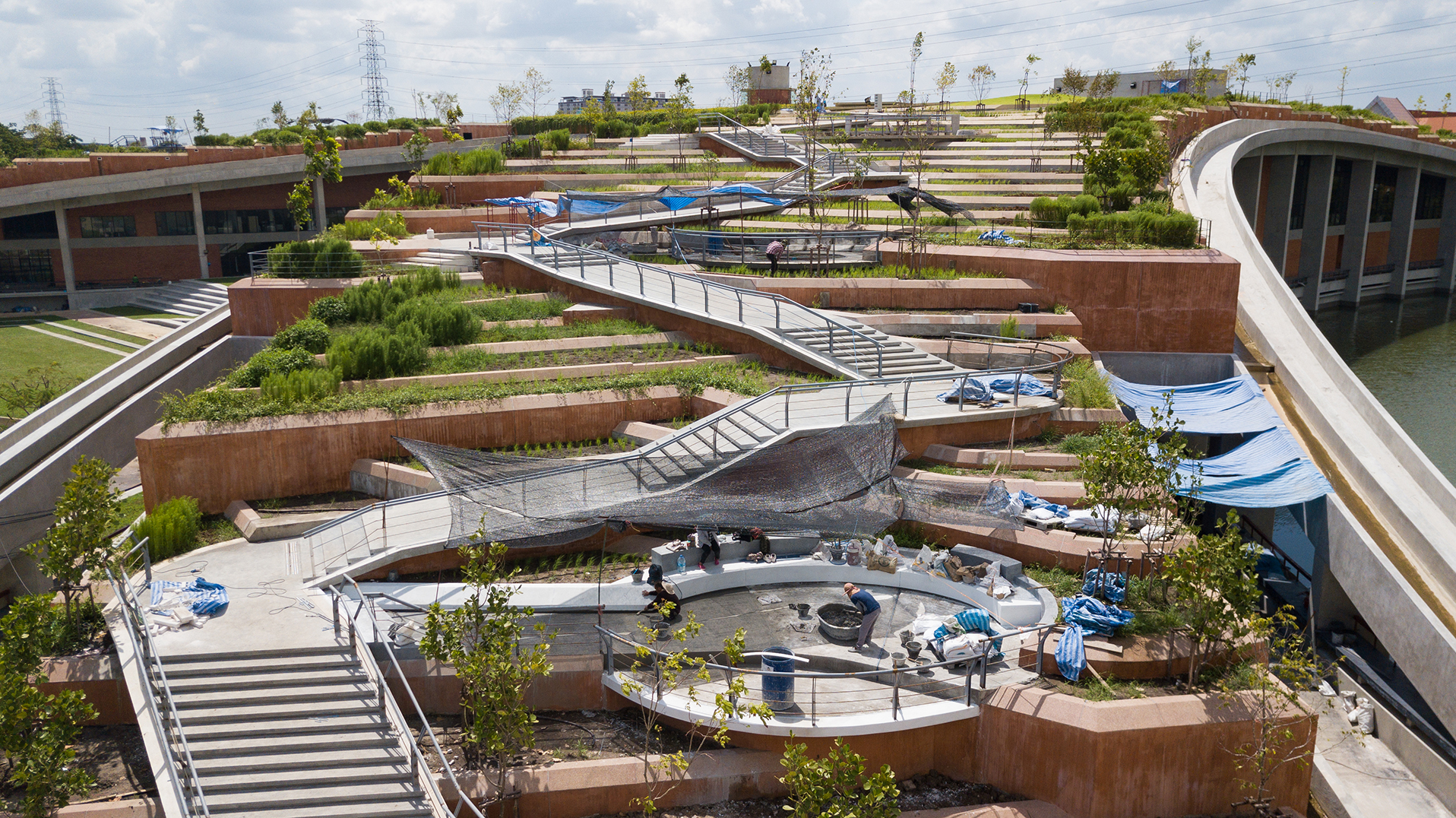
Photo courtesy of LANDPROCESS
ในส่วนของพื้นที่ใช้งานสำคัญอย่าง หอจดหมายเหตุ ที่จะย้ายมาจากมหาวิทยาลัยธรรมศาสตร์ท่าพระจันทร์ ซึ่งจำเป็นที่จะต้องป้องกันความชื้นอย่างยิ่งยวด ทำให้พื้นที่ในส่วนนี้ต้องมีการออกแบบโครงสร้างพิเศษ คือมีหลังคาคอนกรีตสองชั้นในรูปแบบของ double slab เพื่อป้องกันความชื้นจากพืชพรรณด้านบนไม่ให้สร้างความเสียหายกับเอกสารสำคัญด้านล่าง ช่องว่างระหว่างพื้นคอนกรีตสองชั้นมีขนาดประมาณ 1.50 เมตร เพื่อให้คนสามารถเข้าไปซ่อมบำรุงได้สะดวก หรือตรวจสอบการรั่วซึมได้โดยไม่รบกวนพื้นที่ใช้งานข้างใต้ ช่องว่างนี้ยังมีส่วนช่วยในการลดความร้อนที่เข้าสู่อาคารจากทางด้านบน ช่วยให้อาคารแห่งนี้ใช้พลังงานในการปรับอากาศน้อยลงอีกด้วย

งานภูมิสถาปัตยกรรม ถือเป็นอีกส่วนที่มีความสำคัญต่ออาคารแห่งนี้ ช่วยสร้างให้อาคารมีเอกลักษณ์และความพิเศษเฉพาะตัว “โครงการนี้น่าสนใจตรงที่ว่างานแลนด์สเคปได้ถูกนำมาคิดตั้งแต่ต้น ทำให้กลายเป็นเนื้อเดียวกันกับสถาปัตยกรรมอย่างแยกไม่ออก” กชกร วรอาคม ภูมิสถาปนิกแห่ง LANDPROCESS กล่าวถึงการออกแบบงานภูมิสถาปัตยกรรมของอุทยานการเรียนรู้แห่งนี้ ซึ่งในการก่อสร้างจำเป็นต้องมีเทคนิคพิเศษ เพื่อให้หลังคาของอาคารสามารถปลูกพืชพรรณต่างๆ ได้ โดยหลังจากเทพื้นคอนกรีตปกติแล้ว จะต้องมีการปูแผ่นกันความชื้น (Waterproofing Membranes) ทับบนพื้นคอนกรีต และจะมีการทดสอบด้วยการใช้เหล็กทิ่มเพื่อจำลองการชอนไชของรากของพืช หากแผ่นกันความชื้นมีการเสียหายจะต้องทำการปูใหม่ เพราะแสดงว่ารากของต้นไม้สามารถชอนไชได้ เมื่อทำการปูแผ่นกันความชื้นแล้วเสร็จ จะทำการวางท่อระบายน้ำ จากนั้นจึงนำดินมาใส่ โดยชั้นดินที่อยู่บนหลังคาของอาคารจะมีความหนา 1 เมตร เพื่อให้สามารถปลูกต้นไม้ขนาดเล็กและขนาดกลางได้ และเป็นพื้นที่ที่สามารถซึมซับน้ำและระบายน้ำได้ดี
พืชพรรณไม้ที่ถูกเลือกมาปลูกด้านบนหลังคาเขียวทั้งหมดเป็นพืชที่สามารถรับประทานได้ ที่ปลูกขึ้นที่นี่ทั้งหมดโดยไม่มีการย้ายมาจากที่อื่นเพื่อให้สอดคล้องกับแนวคิดของทางมหาวิทยาลัยธรรมศาสตร์ที่ต้องการผลิตอาหารเองได้ ด้านล่างจะเป็นพื้นที่สีเขียว ทั้งสวน พื้นที่พักผ่อน พื้นที่ออกกำลังกายสำหรับคนทั่วไป และสระน้ำขนาดใหญ่ 4 สระ ซึ่งเป็นพื้นที่รับน้ำขนาดใหญ่ให้กับย่านนี้และยังช่วยบำบัดน้ำด้วยวิธีธรรมชาติก่อนจะปล่อยคืนกลับสู่ธรรมชาติ
กชกรยังได้กล่าวทิ้งท้ายเกี่ยวกับอาคารหลังนี้ว่า “อยากให้อาคารนี้เป็นตัวอย่างให้คนได้เห็นว่า สิ่งก่อสร้างกับเมือง สามารถเกื้อกูลกันได้ สามารถอยู่กันได้อย่างพึ่งพากัน โดยมีภูมิสถาปัตยกรรมและสถาปัตยกรรมที่เป็นเนื้อเดียวกันมากขึ้น อาคารนี้จะไม่ใช่ตึกที่เป็นแค่ตึก แต่จะเป็นอาคารที่สอดประสานแนวความคิดของมหาวิทยาลัยธรรมศาสตร์และมุมมองที่มีต่อสังคมและธรรมชาติเข้าไว้ด้วยกัน”





